Norwegian Forest Cat
- December 15, 2023
- 2 comment
Norwegian Forest Cat is Felis catus, Felis is the genus to which all domestic cats belong, and catus is the species designation for the domestic cat. This means that the Norwegian Forest Cat is a subspecies of the domestic cat.
Physical Appearance of Norwegian Forest Cat
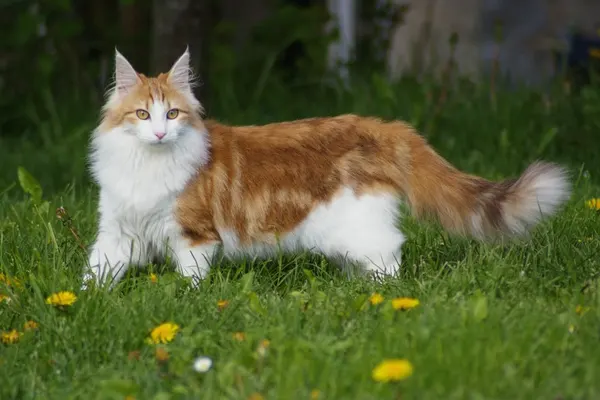
Norwegian Forest Cat
- Lifespan: 10-12 years
- Habitat: Open woodlands, second-growth forests, and edges of woodlands
- Diet: Insectivores, primarily consuming flying insects such as moths, beetles, flies, and caterpillars
- Size: 10-11 cm
- Weight: Male: 5.6-7.4 ounces, Female: 5.2-7 ounces
- Conservation Status: Least Concern.
- Population Trend: The population trend of the Norwegian Forest Cat is being lost to deforestation, development, and agriculture.
The Norwegian Forest Cat, also known as the “Wegie” or “skogkatt” (meaning “forest cat” in Norwegian), is a natural breed native to Norway. They are believed to have descended from wild cats that roamed the Scandinavian forests for centuries and are thought to be one of the oldest domestic cat breeds in Europe.
Fur Coloration of Norwegian Forest Cat
Norwegian Forest Cats are known for their thick, double coat that provides insulation against the harsh Scandinavian climate. Their fur coloration is diverse and varies greatly, ranging from solid colors to intricate patterns
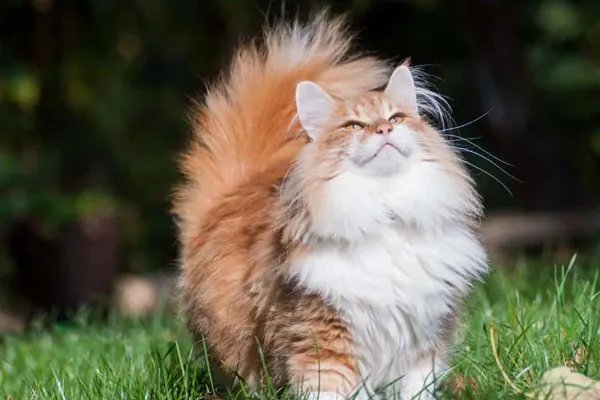

Patterned Colors
- Tortoiseshell: A combination of black, red, and cream patches on a white background
- Tabby: Various tabby patterns, including mackerel, blotched, and ticked, with markings on a solid or patterned background
- Silver: Any of the solid or patterned colors with silver tipping, giving the fur a frosted appearance
- Smoke: Any of the solid or patterned colors with a smoky undercoat, creating a soft, shaded effect
- Golden: Any of the solid or patterned colors with a golden or warm undercoat, enhancing the richness of the fur
- Agouti: A pattern with alternating dark and light bands on individual hairs, giving the fur a wild or rustic appearance
Characteristics of Norwegian Forest Cat
Norwegian Forest Cats are delightful companions with a unique combination of beauty, intelligence, and affection. Their gentle nature and playful spirit make them suitable for families and individuals seeking a loyal and loving feline friend.
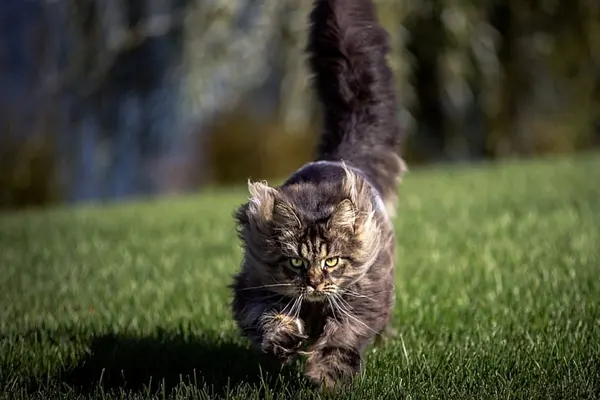
- Gentle and affectionate: Known for their loving and friendly nature
- Playful and energetic: Enjoy games and activities, especially climbing and exploring
- Intelligent and trainable: Can be trained to perform tricks and follow commands
- Independent and adaptable: Can thrive in various living environments, including apartments and houses
- Good with children and other pets: Generally well-behaved around children and other animals, especially when socialized from a young age
Migration Patterns of Norwegian Forest Cat
Norwegian Forest Cats are not migratory animals and typically remain within their established home ranges. They are native to Norway, where they have adapted to the harsh Scandinavian climate and thrive in the dense forests and mountainous regions. Their thick, double coat provides insulation against the cold and their strong climbing abilities allow them to navigate the rugged terrain.
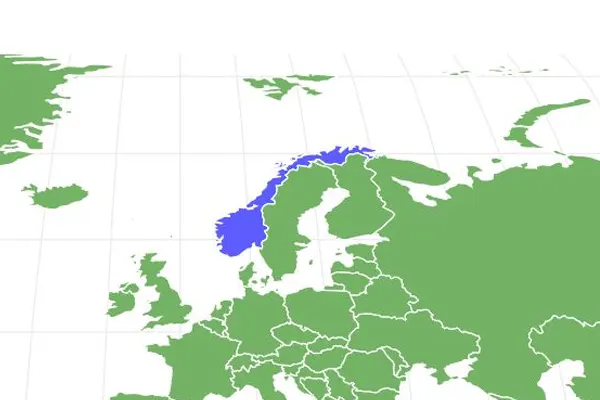
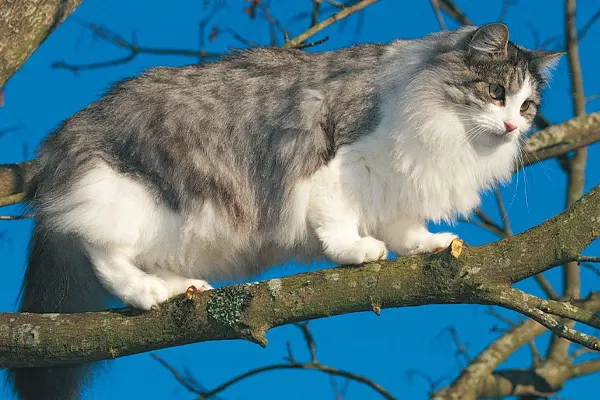
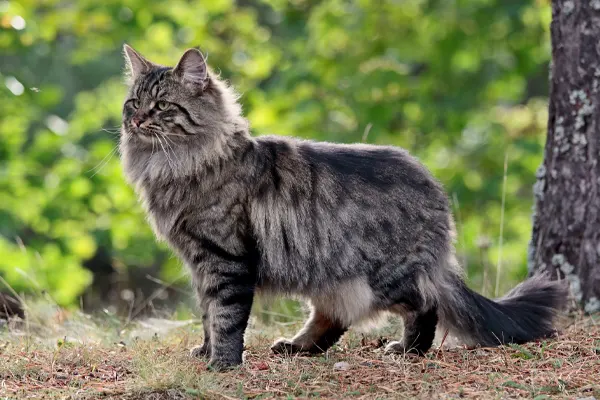
This cats are relatively sedentary animals that have adapted to their native environment and do not engage in long-distance migrations. Their innate resilience and adaptability have allowed them to flourish in the challenging Scandinavian landscape.
Habitat & Distribution of Norwegian Forest Cat
Their natural habitat has played a crucial role in their evolution and adaptation. The thick, double coat provides insulation against the cold, their strong claws and climbing abilities allow them to navigate the rugged terrain, and their acute senses enable them to locate prey in the dense forests.
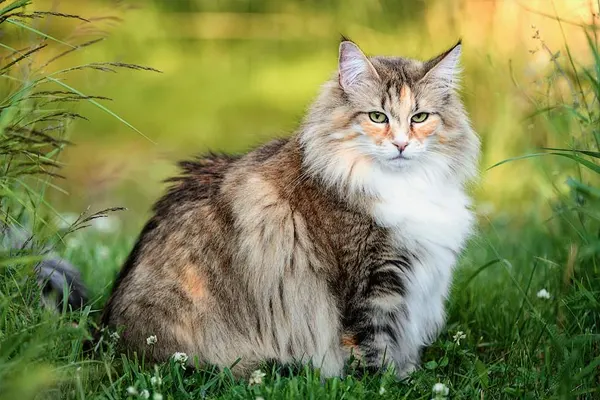
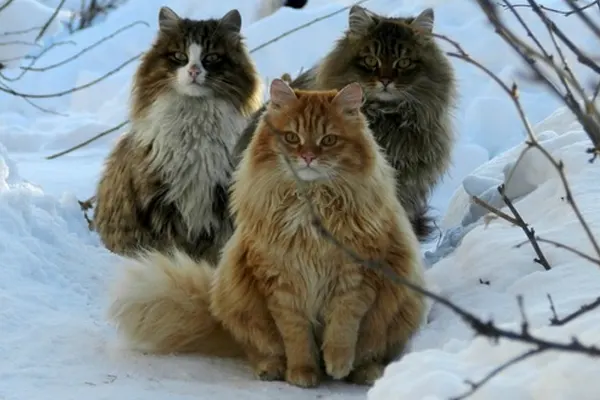
Norwegian Forest Cats are found throughout Norway, where they continue to thrive in their native habitats. They have also been introduced to other parts of the world, including North America, Europe, and Asia, and have adapted well to various environments. However, their natural habitat in Norway remains their stronghold, where they can be found living in harmony with their environment and showcasing their remarkable resilience and adaptability.
Behavioral Traits of Norwegian Forest Cat
Norwegian Forest Cats are known for their loving and gentle nature. They enjoy spending time with their human companions, often seeking out cuddles and affection. Their playful spirit makes them engaging companions, and they enjoy games, interactive activities, and exploring their surroundings.
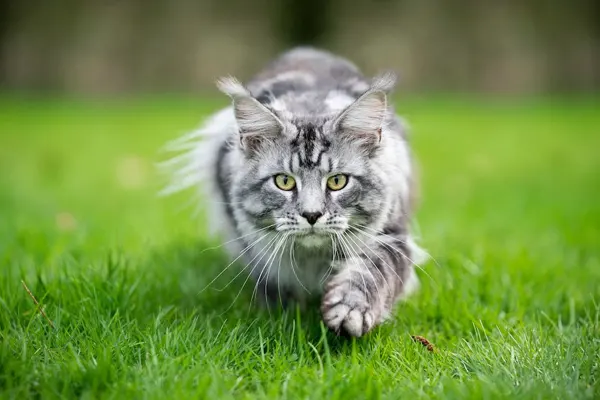
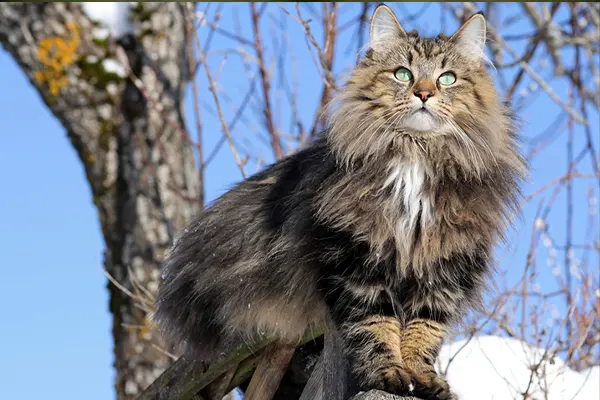
- Intelligent and Trainable: Norwegian Forest Cats are intelligent and trainable, making them eager to learn and respond well to positive reinforcement techniques. They can be taught tricks, follow commands, and even learn to use a litter box and scratching post.
- Independent and Adaptable: Despite their affectionate nature, Norwegian Forest Cats retain an independent streak, reflecting their wild ancestry. They are comfortable with solitude and can entertain themselves, making them suitable for individuals or families who may be away for extended periods. They can also adapt well to various living environments, including apartments and houses.
- Energetic and Playful: Norwegian Forest Cats maintain a high level of energy and enjoy active play sessions. They appreciate interactive games that engage their minds and bodies, such as chasing toys, playing fetch, or climbing cat trees.
- Gentle with Children and Other Pets: Norwegian Forest Cats are generally well-behaved around children and other pets, especially when socialized from a young age. Their gentle nature and playful spirit make them suitable for families with children or other pets.
Role in Ecosystem of Norwegian Forest Cat
As natural predators, Norwegian Forest Cats play a crucial role in regulating prey populations. They primarily prey on small mammals, such as mice, voles, and squirrels, helping to control their numbers and prevent overpopulation. This predation helps maintain a healthy balance among various species within the ecosystem.
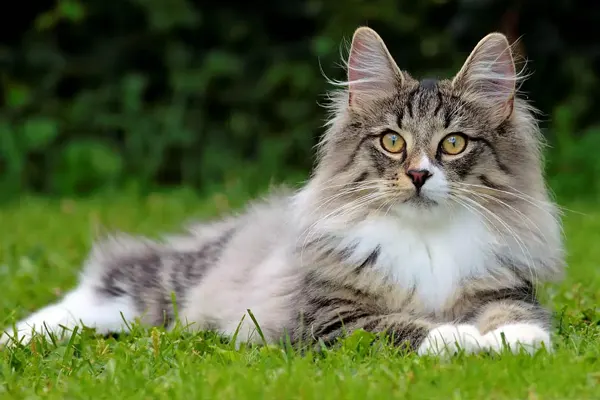
- Nutrient Cycling: Through their diet and waste products, Norwegian Forest Cats contribute to nutrient cycling within the forest ecosystem. As they consume prey, they transfer nutrients from lower trophic levels (small mammals) to higher trophic levels (themselves). Their feces and urine further contribute to nutrient cycling, releasing essential nutrients back into the soil, where they can be utilized by plants and other organisms.
- Seed Dispersal: Norwegian Forest Cats can indirectly aid in seed dispersal, contributing to plant regeneration and forest diversity. As they consume small mammals, they may ingest seeds that pass through their digestive systems and are later deposited in their feces. These seeds can then germinate and grow in new locations, expanding the distribution of plant species and promoting forest regeneration.
- Natural Pest Control: Norwegian Forest Cats play a role in natural pest control, helping to regulate insect populations within the forest. They may prey on insects, such as beetles, moths, and caterpillars, reducing their numbers and preventing potential damage to plants and crops.
- Scavengers: Norwegian Forest Cats may act as scavengers, consuming dead or decaying animal matter. This helps to remove organic waste from the environment, contributing to decomposition and nutrient cycling.
Dietary Habits of Norwegian Forest Cat
Norwegian Forest Cats are well-adapted to their natural diet of meat-based prey. Their sharp claws and teeth, efficient digestive system, hunting instincts, and ability to adapt their dietary habits to seasonal fluctuations ensure they can obtain the nutrients they need to thrive in their Scandinavian forest habitat.
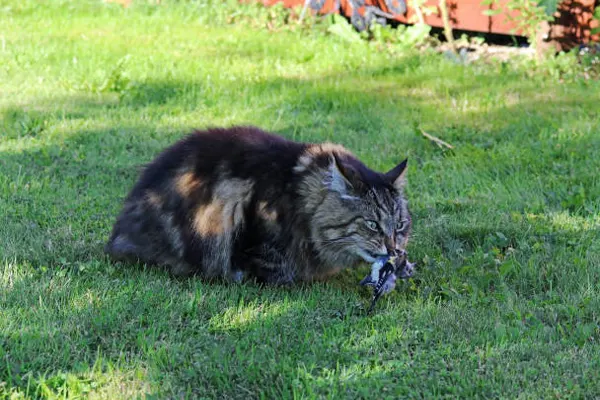
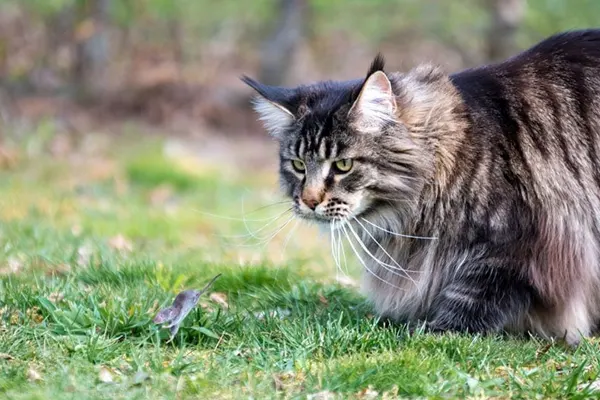
- Small Mammals: Norwegian Forest Cats primarily prey on small mammals, such as mice, voles, squirrels, and rabbits. These prey provide them with essential protein, fats, and vitamins.
- Birds: They may also opportunistically prey on birds, such as songbirds and small rodents. Birds provide a rich source of protein and fat.
- Insects: Insects, such as beetles, moths, and caterpillars, can supplement their diet and provide additional nutrients.
Interesting Facts of Norwegian Forest Cat
Norwegian Forest Cats are renowned for their exceptional climbing abilities, a trait inherited from their wild ancestors. Their strong claws and agile bodies allow them to navigate trees, shelves, and other elevated surfaces with ease. This climbing prowess not only serves as a form of entertainment and exploration but also reflects their adaptability to their forest habitat.
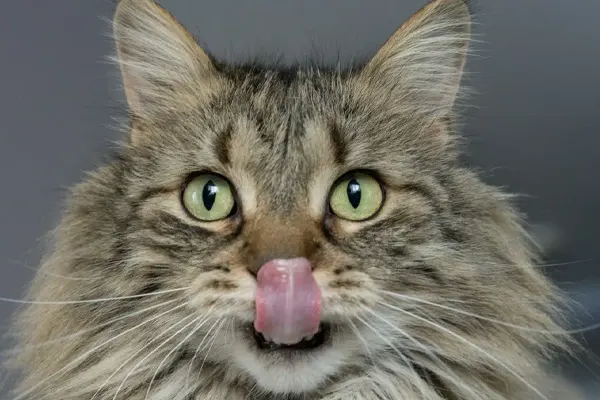
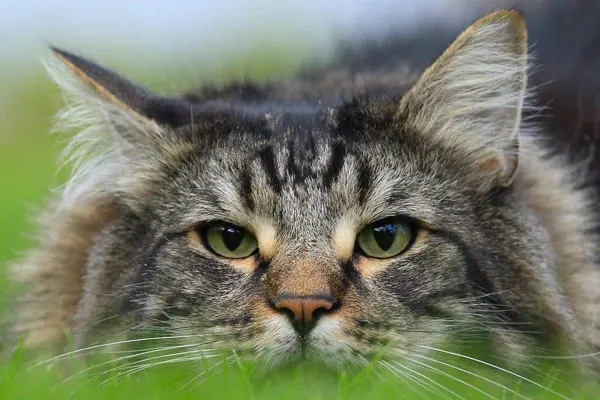
- Symbol of Norwegian Heritage: Norwegian Forest Cats are deeply ingrained in Norwegian culture and heritage. They are considered a national treasure and have been featured in folklore, art, and literature, reflecting their significance in the hearts of Norwegians.
- Intelligence and Trainability: Norwegian Forest Cats are intelligent and trainable, responding well to positive reinforcement techniques. They can learn tricks, follow commands, and even be trained to use a litter box and scratching post. Their intelligence makes them engaging and responsive companions.
- Tweeting Vocalizations: Norwegian Forest Cats are known for their unique “tweeting” vocalizations, and soft, high-pitched chirps that express contentment, happiness, or a desire for attention. These gentle sounds add to their endearing charm and provide a glimpse into their communication repertoire.
- Adaptable to Various Environments: While native to Norway, Norwegian Forest Cats have adapted well to various living environments, including apartments and houses. Their adaptability stems from their independent nature and ability to find comfort and entertainment both indoors and outdoors.
Nesting Habits
Norwegian Forest Cats are not known for constructing elaborate nests. They are opportunistic nesters, often utilizing existing cavities or structures, such as hollow logs, tree branches, or even abandoned bird nests. Their nesting habits reflect their adaptability and resourcefulness, allowing them to find suitable nesting sites in their natural environment.


Nest Location
- Typically choose nesting sites that provide shelter and protection from the elements. They prefer locations that are secluded, quiet, and offer some camouflage, blending in with their surroundings.
- Common nesting locations include hollow logs, tree cavities, dense foliage, or even abandoned bird nests. These structures provide shelter from harsh weather conditions and protect the kittens from predators.
- Female Norwegian Forest Cats may inspect multiple potential nesting sites before selecting one that meets their needs for security, comfort, and protection.
Calls & Vocalizations
The vocalizations of Norwegian Forest Cats provide a window into their communication system and reveal their diverse range of emotions. Their gentle chirps, playful trills, and affectionate meows add to their charm, while their hisses and growls serve as a reminder of their innate wild instincts. Understanding their vocalizations can enhance the bond between humans and these remarkable feline companions.
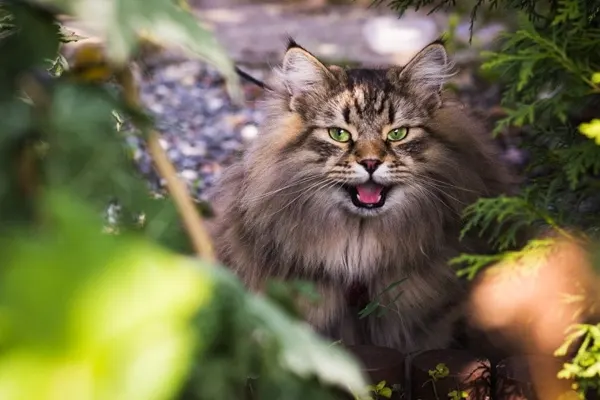
Range of Vocalizations
- Tweeting: Their signature “tweeting” vocalization is a soft, high-pitched chirp that expresses contentment, happiness, or a desire for attention. These gentle sounds are often heard when they are interacting with their human companions or exploring their surroundings.
- Meows: Norwegian Forest Cats also use meows to communicate, with varying tones and lengths conveying different meanings. Short, sharp meows may indicate hunger or discomfort, while longer, more drawn-out meows may express affection or a desire to play.
- Trills: They may also emit trills, which are rapid, high-pitched vocalizations that often express excitement or anticipation. Trills are often heard when they are greeting their owners or playing with toys.
- Hisses and Growls: While generally gentle, Norwegian Forest Cats may hiss or growl if they feel threatened or are protecting their territory. These vocalizations serve as a warning to potential intruders or to express displeasure.
Ecological Significance
Norwegian Forest Cats are an essential component of the Scandinavian forest ecosystem, contributing to predator-prey dynamics, nutrient cycling, seed dispersal, natural pest control, and scavenging. Their presence helps maintain a healthy balance among various species and supports the overall functioning of the forest environment.

- Natural Pest Control: Norwegian Forest Cats play a role in natural pest control, helping to regulate insect populations within the forest. They may prey on insects, such as beetles, moths, and caterpillars, reducing their numbers and preventing potential damage to plants and crops.
- Scavengers: Norwegian Forest Cats may act as scavengers, consuming dead or decaying animal matter. This helps to remove organic waste from the environment, contributing to decomposition and nutrient cycling.
- Predator-Prey Dynamics: Norwegian Forest Cats play a crucial role in regulating prey populations, primarily consuming small mammals such as mice, voles, and squirrels. By controlling prey numbers, they help prevent overpopulation and maintain the delicate balance of predator-prey dynamics in the forest ecosystem.
- Nutrient Cycling: As they consume prey and excrete waste products, Norwegian Forest Cats contribute to nutrient cycling within the forest ecosystem. They transfer nutrients from lower trophic levels (small mammals) to higher trophic levels (themselves), and their feces and urine further release essential nutrients back into the soil. These nutrients are then utilized by plants and other organisms, supporting the growth and regeneration of the forest.
Conservation Status
The Norwegian Forest Cat is not currently considered threatened, it is essential to remain vigilant and address potential threats that could impact its population and well-being. Responsible breeding practices, habitat conservation, and informed pet ownership are key to ensuring the continued existence of this remarkable breed and its unique role in the Scandinavian ecosystem.
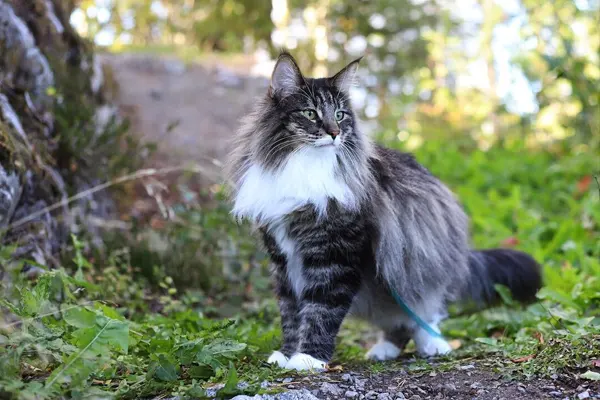
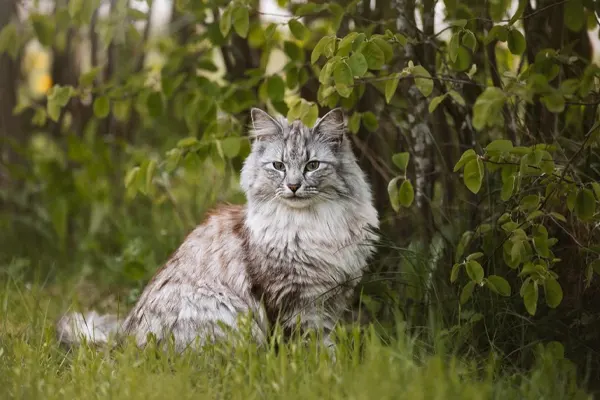
- Hybridization: Norwegian Forest Cats may hybridize with other domestic or wild cat breeds, leading to a dilution of their genetic purity and potential loss of distinctive characteristics.
- Loss of Habitat: As human development and urbanization encroach upon natural habitats, Norwegian Forest Cats may face reduced access to their traditional living spaces and prey sources.
- Diseases: Like other domestic cats, Norwegian Forest Cats are susceptible to various diseases, such as feline infectious peritonitis and feline leukemia virus.
Research and Ongoing Studies
Norwegian Forest Cats are a popular breed with a rich history, and researchers are continually exploring various aspects of their biology, behavior, and genetics. Ongoing studies are aimed at understanding the breed’s characteristics, identifying potential health concerns, and ensuring their continued well-being.
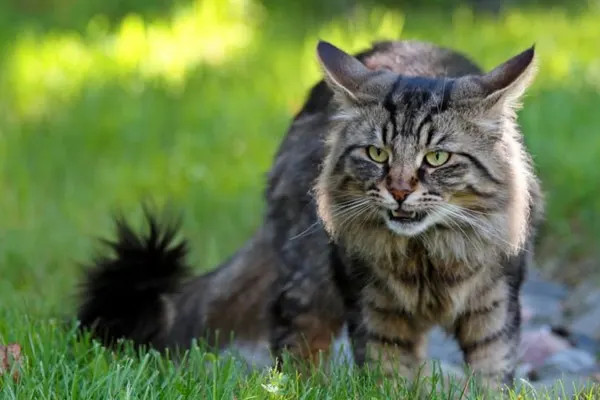
Genetic Studies:
- Genetic Diversity: Researchers are investigating the genetic diversity of Norwegian Forest Cats to identify potential genetic markers associated with specific traits or health conditions. This information can aid in breeding programs and the development of targeted health screening tests.
- Genetic Health: Studies are underway to identify genetic predispositions to certain health conditions, such as hypertrophic cardiomyopathy (HCM), a common heart disease in cats. This knowledge can help breeders select for healthier lines and develop early detection methods for affected individuals.
Behavioral Studies:
- Social Behavior: Researchers are exploring the social behavior of Norwegian Forest Cats, particularly their interactions with other cats and humans. Understanding their communication patterns, social preferences, and attachment bonds can enhance human-cat relationships and inform effective management strategies.
- Learning and Cognition: Studies are investigating the learning abilities and cognitive capacities of Norwegian Forest Cats. Understanding their intelligence, problem-solving skills, and memory can inform training techniques and enrichment activities.
- Play Behavior: Researchers are examining the play behavior of Norwegian Forest Cats, identifying preferred play patterns, motivations, and the role of play in their development and well-being. This knowledge can guide the development of engaging toys and enrichment activities.
Health Studies:
- Nutrition: Studies are investigating the optimal nutrition for Norwegian Forest Cats, considering their unique dietary needs and potential sensitivities to specific food ingredients. This information can help owners make informed dietary choices for their feline companions.
- Preventative Care: Researchers are exploring effective preventative care strategies for Norwegian Forest Cats, including vaccination protocols, parasite control measures, and monitoring for potential health issues.
- Feline Hypertrophic Cardiomyopathy (HCM): Ongoing studies are aimed at understanding the genetic basis of HCM in Norwegian Forest Cats, identifying potential biomarkers for early detection, and exploring treatment options for affected individuals.
Educational and Ecotourism Opportunities
Educational Programs:
- Breed Education: Schools, community centers, and animal shelters could host workshops or presentations introducing the history, characteristics, and care requirements of Norwegian Forest Cats. This could dispel common misconceptions and foster a deeper understanding of the breed.
- Conservation Education: Educational programs could highlight the role of Norwegian Forest Cats in the Scandinavian ecosystem, emphasizing their importance in predator-prey dynamics, nutrient cycling, and seed dispersal. This could promote environmental awareness and stewardship.
- Responsible Pet Ownership: Educational programs could focus on responsible pet ownership practices, including proper nutrition, veterinary care, socialization, and training techniques specifically tailored to Norwegian Forest Cats. This could promote informed pet ownership and enhance feline welfare.
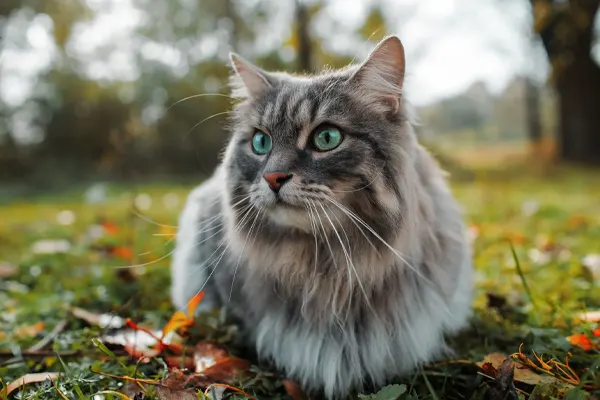
Ecotourism Initiatives:
- Cat Cafés: The concept of cat cafés, where patrons can enjoy refreshments while interacting with cats, could be expanded to feature Norwegian Forest Cats as a unique attraction. This could provide a relaxing and educational experience for visitors while also promoting awareness of the breed.
- Feline-Themed Tours: Guided tours through scenic locations in Scandinavia could incorporate encounters with Norwegian Forest Cats in their natural habitat. Visitors could learn about the breed’s ecology, behavior, and the importance of preserving their natural environment.
- Interactive Exhibits: Zoos, animal sanctuaries, or breed-specific museums could create interactive exhibits dedicated to Norwegian Forest Cats. These exhibits could feature educational displays, hands-on activities, and opportunities to observe the cats’ behavior and interactions.
Additional Considerations:
- Collaboration with Breed Clubs: Partnering with Norwegian Forest Cat breed clubs could provide valuable expertise and resources for developing educational and ecotourism initiatives.
- Sustainability Practices: Integrating eco-friendly practices into ecotourism ventures, such as using renewable energy sources and minimizing waste, could align with the conservation ethos of the breed.
- Community Engagement: Engaging local communities in ecotourism activities could provide economic benefits and foster a sense of pride and responsibility for the preservation of Norwegian Forest Cats and their habitat.
Conclusion
The Norwegian Forest Cat, a majestic and affectionate breed with a rich history, has captivated hearts and homes worldwide. Their gentle nature, playful spirit, and adaptability have made them cherished companions and beloved symbols of their Scandinavian heritage.
Hailing from the rugged forests of Norway, Norwegian Forest Cats have evolved to thrive in harsh environments, possessing a thick double coat, sharp claws, and innate hunting instincts. Their resilience and resourcefulness have allowed them to adapt to various living spaces, from spacious homes to cozy apartments.
Norwegian Forest Cats are known for their gentle and affectionate nature, forming strong bonds with their human companions. Their playful spirit shines through in their love for interactive games, climbing adventures, and exploring their surroundings with boundless curiosity.
Despite their wild ancestry, Norwegian Forest Cats are remarkably adaptable, seamlessly transitioning from indoor comfort to outdoor adventures. Their intelligence and trainability make them responsive companions, eager to learn and adapt to their environment.
As an integral part of the Scandinavian ecosystem, Norwegian Forest Cats play a crucial role in maintaining predator-prey dynamics, nutrient cycling, and seed dispersal. Their presence contributes to the delicate balance of the forest environment, ensuring its continued health and vitality.
The conservation of Norwegian Forest Cats is essential to preserving their unique genetic heritage and ensuring their continued presence in the Scandinavian ecosystem. Responsible breeding practices, habitat protection, and informed pet ownership are key to safeguarding the well-being of this remarkable breed.

Forestry
Forestry Author2 comments
Thank you this was so helpful! I’m other hearted/ animal hearted and I have been questioning my kin type for a while now and when this popped into mind, I went searching and found this! So much greta info thank you!! ☺️

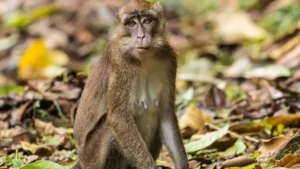
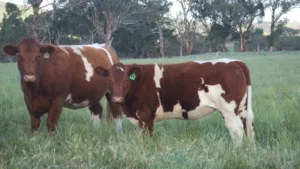
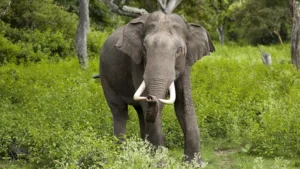

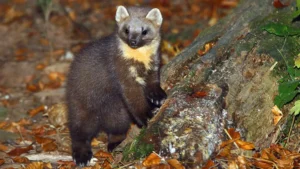
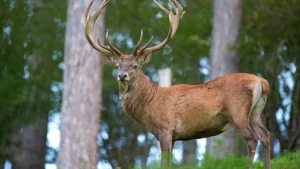

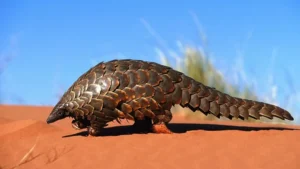
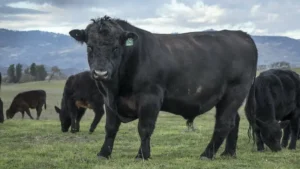
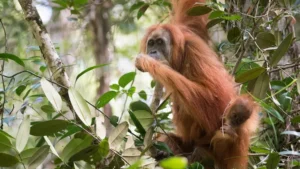

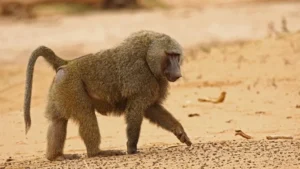
love this article! so well organized and readable with so much info but not too long of a read! im researching some things for a warrior cats fan story and this was so helpful to get to know this breed of cat. thanks!
Autumn
February 4, 2024 5:14 am